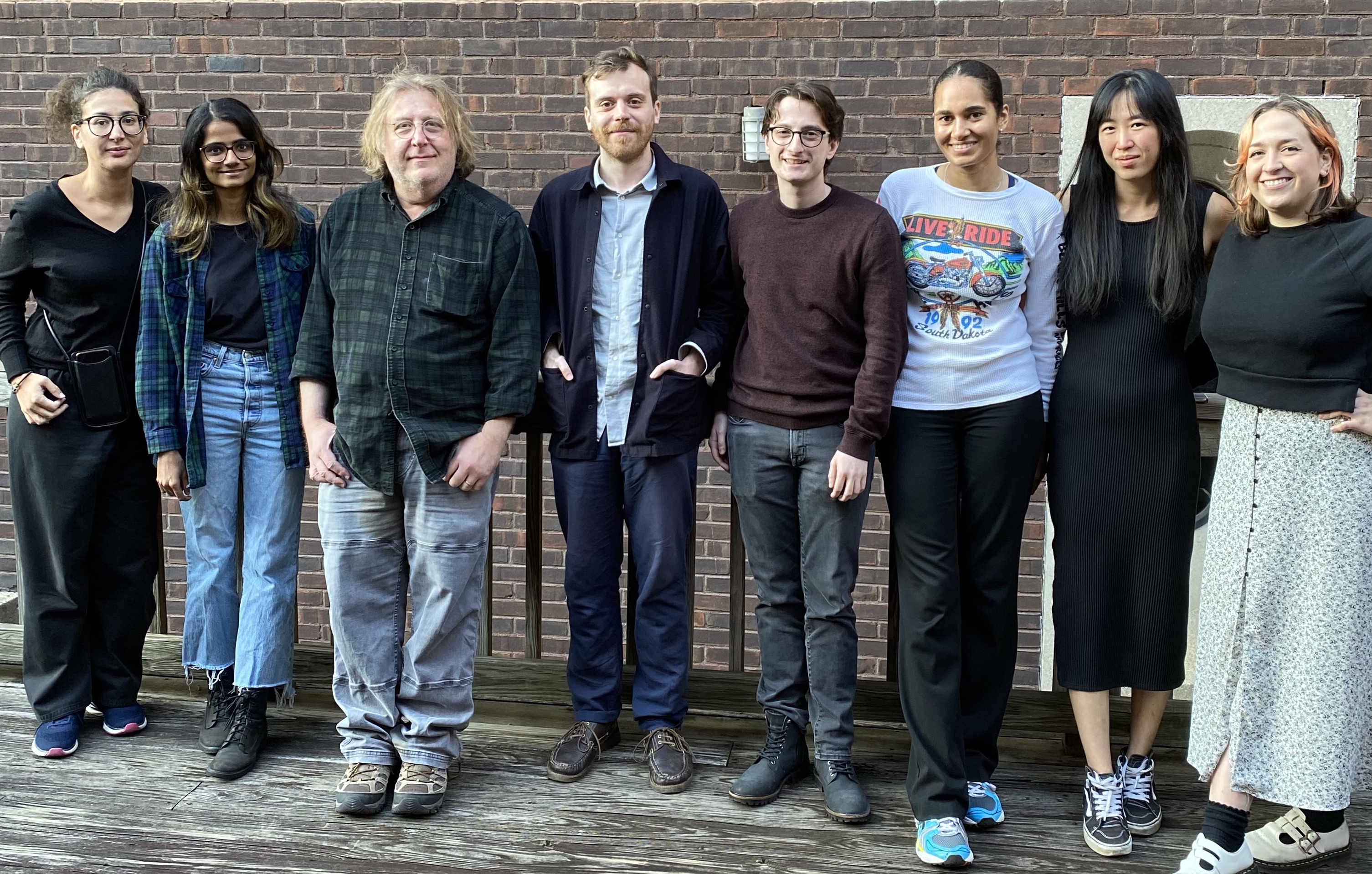Kamien Group

Department of Physics and Astronomy
209 South 33rd Street
University of Pennsylvania
Philadelphia, PA 19104-6396
Theoretical Condensed Matter Physics
Our research interests center on problems in condensed matter theory. We are currently exploring problems in liquid crystals, foams, soft self-assembly, and biological physics.
Materials Geometry
We are fortunate that soft matter systems are large enough so that we can treat them geometrically. Geometry is powerful because it is scale-invariant. Once a principle of organization is understood in one system, the structure can be translated to different scales, materials, and interactions. For instance, minimal surfaces have a long history of lying in the interface between Physics and Mathematics. Their use has had somewhat of a revival due to the ever increasing complexity of lyotropic phases of matter. Block copolymers and amphiphiles form structures that resemble doubly- and triply-periodic minimal surfaces. This is no surprise: because physics problems can be posed as extremal problems and because the mean curvature is the lowest-degree, rotationally-invariant scalar, minimal surfaces arise as solutions. However, nonlinearities should play an important role as the lengthscales of the structures become comparable to molecular sizes. Likewise, hard sphere systems are pure: their physics is governed solely by entropic depletion interaction with the only adjustable parameter being the volume fraction. Despite their simplicity, many details of the freezing transition are not understood. We are interested in the rigorous viability of the so-called random-close-packed state. Through geometric methods we are probing this state via analytic and numerical approaches. We study the equation of state via modifications to the virial expansion. We are also interested in the packing of long, stiff and semi-stiff polymers in the presence of entropic depletors.Liquid Crystals
The theory of liquid crystals and liquid crystalline polymers runs the gamut from the rheology of complex fluids to the esoterica of homotopy and topological defects. All aspects of theory are intimately influenced and connected with experiment. This places liquid crystal physics in an exciting position: it is driven by both theory and experiment and by both the abstract and the applied. Specifically, chiral molecules are ubiquitous in nature and exhibit many liquid crystal phases. They are extensively studied by biologists, chemists and biophysicists. There is still much theoretical work to be done on the wealth of experimental data. Smectic liquid crystals as well as columnar liquid crystals have the analogue of the Meissner phase in superconductors, in which chirality is excluded from the bulk (just as the magnetic field is expelled in a superconductor). The constraints imposed by topology and geometry can screen out chirality as well. We are studying the nonlinear elasticity of these phases through exact solutions and geometric principles. Using methods of topology we are classifying the structure and interactions of topological defects in these and more complex systems.
This work has been or is supported, in part, through the Simons Foundation, the Charles E. Kaufman Foundation a supporting organization of The Pittsburgh Foundation, the ACS Petroleum Research Fund, the Advanced Functional Fabrics of America Grant W15QKN-16-3-0001, and the National Science Foundation Through Grants DMR-9732963, INT-9910017, DMR-0102459, DMR-0129804, DMR-0520020, DMR-0547230, CMMI-0900468, DMR-1120901, DMR-1262047, EFRI-1331583, and DMR-1720530.
Last modified 29 June 2021
